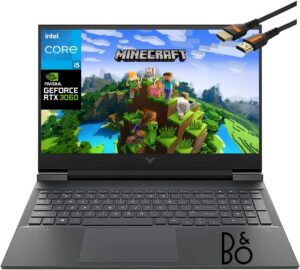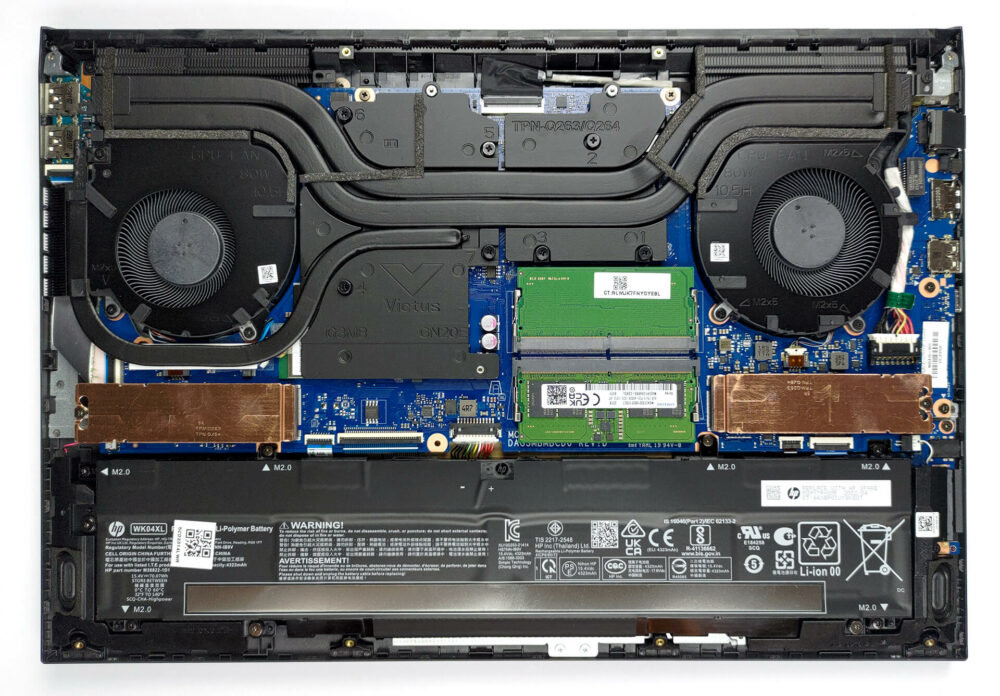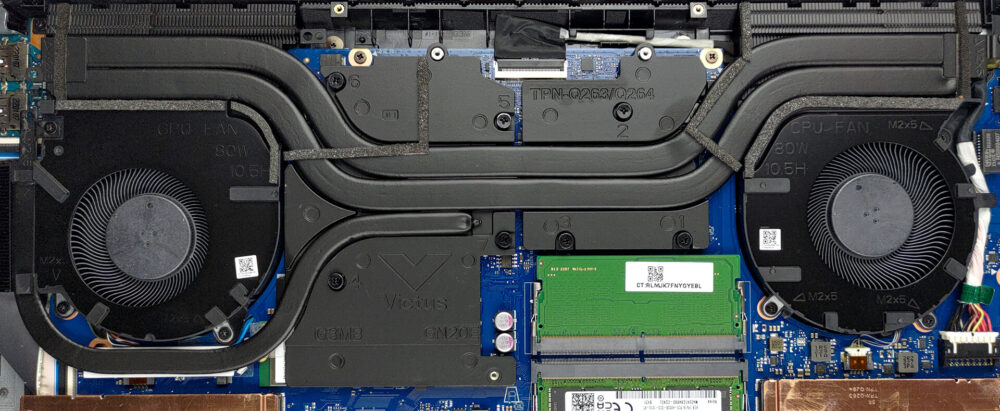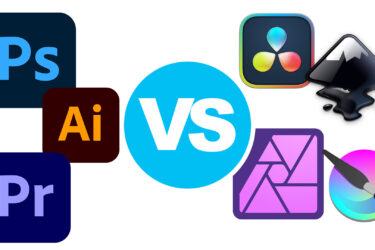Inside HP Victus 16 (16-d1000) – disassembly and upgrade options
HP Victus 16 is a pretty affordable gaming machine. However, it is no slouch when it comes to upgradeability.
Check out all HP Victus 16 (16-d1000) prices and configurations in our Specs System, or read more in our In-Depth review.
1. Remove the bottom plate
To open this device, you need to undo a total of 8 Phillips-head screws. Then, pry the bottom panel starting from the front.
2. Battery
Inside, we find a 70Wh battery pack. It lasts for nearly 10 hours of Web browsing, or about 9 hours of video playback. To take it out, remove the 6 Phillips-head screws that keep it in place, and unplug the battery connector from the motherboard.
3. Memory and storage
You get two SODIMM slots, which fit DDR5 memory, working at 4800MHz. They also run in dual-channel mode. Storage-wise, there are two M.2 PCIe x4 slots, one of which supports Gen 4 drives.
4. Cooling system
Here, the cooling comprises two heat pipes shared between the CPU and the GPU, as well as a third one meant for the graphics card. It also connects to a separate heat sink. Furthermore, two heat spreaders take care of the graphics memory and the VRMs.
Check out all HP Victus 16 (16-d1000) prices and configurations in our Specs System, or read more in our In-Depth review.
HP Victus 16 (16-d1000, e1000) in-depth review
While some brands have celebrated their 30th birthday this year, others are young enough to just be accepted into the nursery. Yes, we are talking about the Victus series from HP. At first, it might appear as a slightly more premium version of the Pavilion Gaming series, but it aspires to be much more than that.Was there a reason for HP to create this brand, though? Well, the answer to this question might not be as optimistic as HP would have wanted. Nevertheless, since we buy all the devices we test, we are proud of our independence. And this is why we can say that the Victus 16 should n[...]
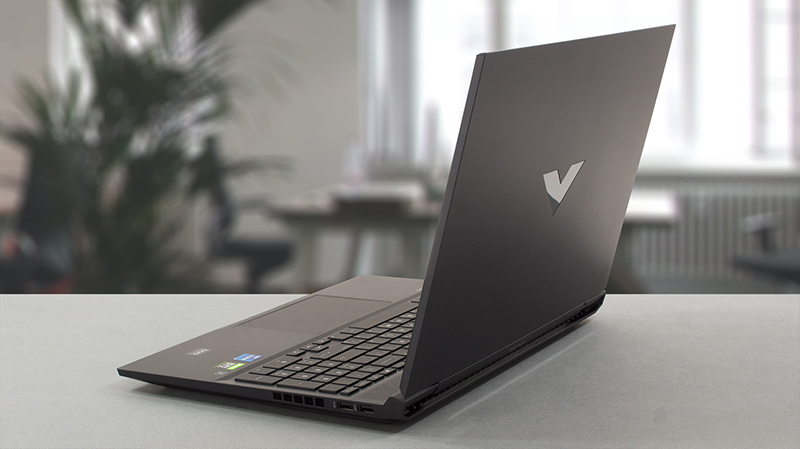
Pros
- Affordable
- Good keyboard
- 2x SODIMM DDR5 + 2x M.2 slots (one supports Gen 4 drives)
- Decent cooling
- No PWM (BOE0AAD)
- Good battery life
- Optional 144Hz refresh rate with quick pixel response times (BOE0AAD)
Cons
- Low CPU performance in long loads
- No Thunderbolt
- Only 50% sRGB coverage (BOE0AAD)
- Bouncy lid and not great build quality in general
